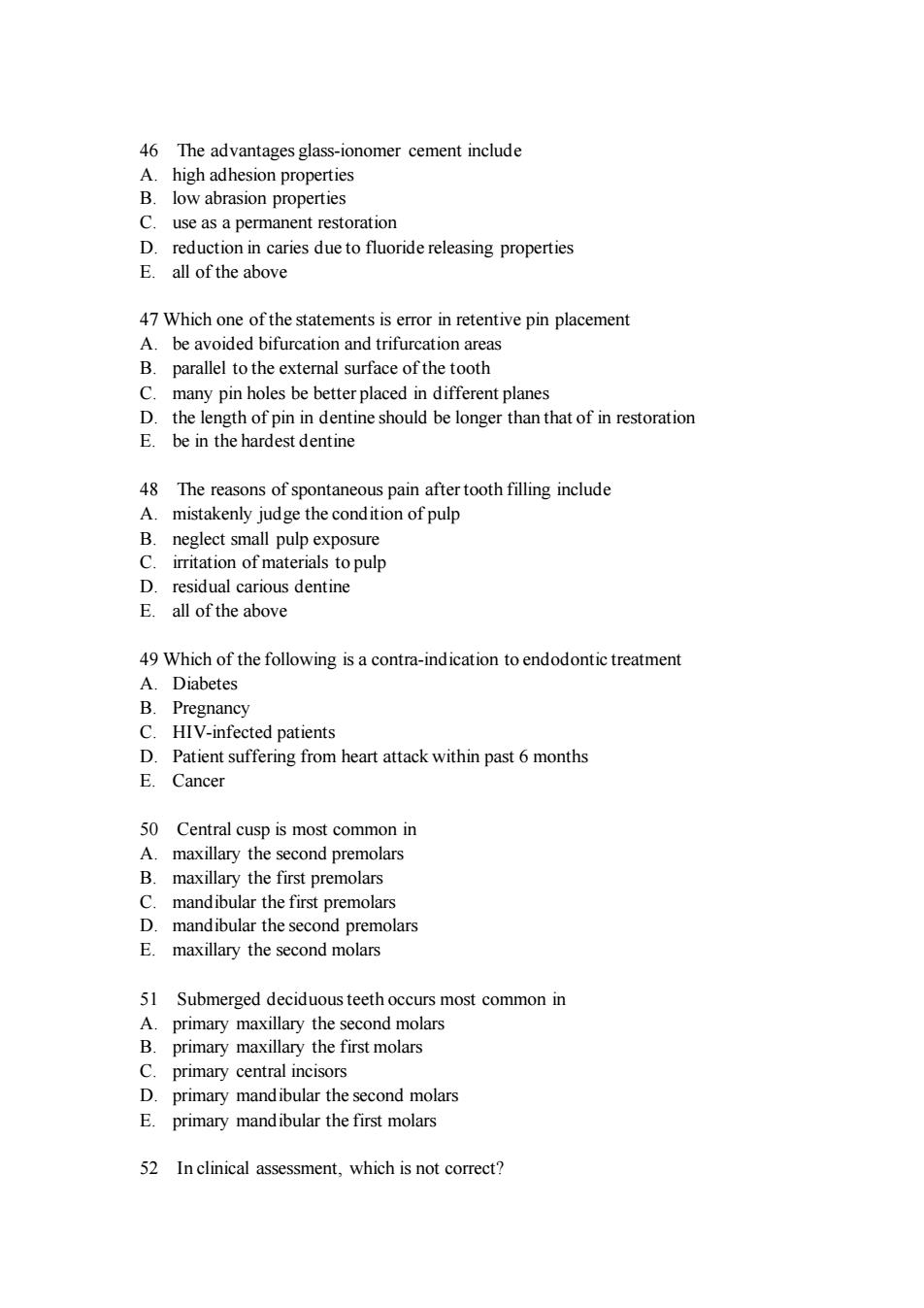正在加载图片...

46 The advantages glass-ionomer cement include A.high adhesion properties B.low abrasion properties C.use as a permanent restoration D.reduction in caries due to fluoride releasing properties E.all of the above 47 Which one of the statements is error in retentive pin placement A.be avoided bifurcation and trifurcation areas B.parallel to the external surface of the tooth C.many pin holes be better placed in different planes D.the length of pin in dentine should be longer than that of in restoration E.be in the hardest dentine 48 The reasons of spontaneous pain after tooth filling include A.mistakenly judge the condition of pulp B.neglect small pulp exposure C. irritation of materials to pulp D.residual carious dentine E.all of the above 49 Which of the following is a contra-indication to endodontic treatment A.Diabetes B.Pregnancy C.HIV-infected patients D.Patient suffering from heart attack within past 6 months E.Cancer 50 Central cusp is most common in A.maxillary the second premolars B.maxillary the first premolars C.mandibular the first premolars D.mandibular the second premolars E.maxillary the second molars 51 Submerged deciduous teeth occurs most common in A.primary maxillary the second molars B.primary maxillary the first molars C.primary central incisors D.primary mandibular the second molars E.primary mand ibular the first molars 52 In clinical assessment,which is not correct?46 The advantages glass-ionomer cement include A. high adhesion properties B. low abrasion properties C. use as a permanent restoration D. reduction in caries due to fluoride releasing properties E. all of the above 47 Which one of the statements is error in retentive pin placement A. be avoided bifurcation and trifurcation areas B. parallel to the external surface of the tooth C. many pin holes be better placed in different planes D. the length of pin in dentine should be longer than that of in restoration E. be in the hardest dentine 48 The reasons of spontaneous pain after tooth filling include A. mistakenly judge the condition of pulp B. neglect small pulp exposure C. irritation of materials to pulp D. residual carious dentine E. all of the above 49 Which of the following is a contra-indication to endodontic treatment A. Diabetes B. Pregnancy C. HIV-infected patients D. Patient suffering from heart attack within past 6 months E. Cancer 50 Central cusp is most common in A. maxillary the second premolars B. maxillary the first premolars C. mandibular the first premolars D. mandibular the second premolars E. maxillary the second molars 51 Submerged deciduous teeth occurs most common in A. primary maxillary the second molars B. primary maxillary the first molars C. primary central incisors D. primary mandibular the second molars E. primary mandibular the first molars 52 In clinical assessment, which is not correct?